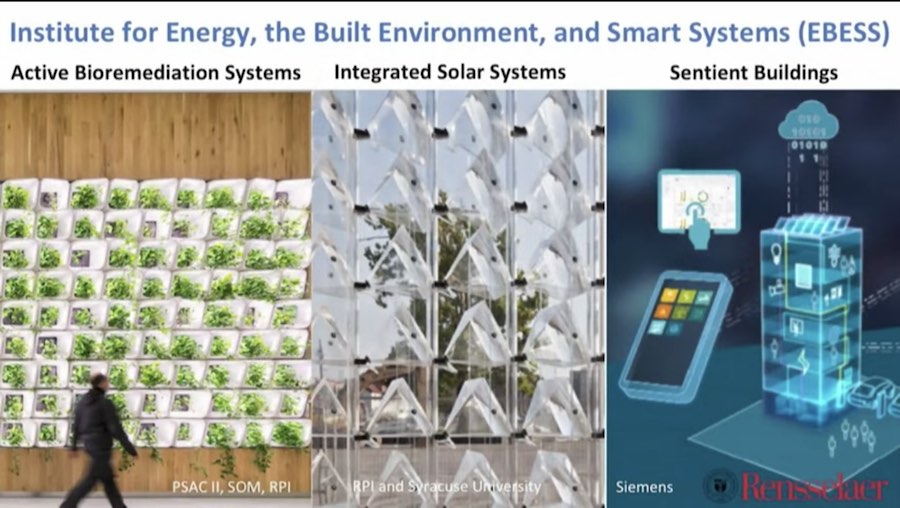Half the technologies needed to reach net zero by 2050 have not yet been developed, said Fatih Birol, executive director of the International Energy Agency, on April 23—the last day of President Joe Biden’s Leaders Summit on Climate. Design firms and others in the AEC sector will play a key role in helping the world reach net-zero carbon emissions by 2050, according to those at the summit
In response to that challenge, Shirley Ann Jackson, president of Rensselaer Polytechnic Institute (RPI) announced during the summit that the Troy, N.Y.-based university is partnering with design firms Thornton Tomasetti, HKS, OBMI, and Perkins & Will, as well as with Siemens, Lutron Electronics and the Brooklyn Law School to create the Institute for Energy, the Built Environment and Smart Systems (EBESS), based in Brooklyn, N.Y. The institute will work to “drive decarbonization of urban environments at the systems level.”
RPI and industry partners have discussed EBESS for less than a year, says Jackson, and specific projects have yet to be determined. But she sees endless possibilities to continue work that’s already being done by RPI, including mimicking photosynthesis processes for energy production and developing batteries for energy storage that use magnesium, sodium and calcium.
“The industry poses hard problems when they are trying to do real things,” Jackson told ENR in an interview. Pairing academia and industry “becomes the natural pathway for translation into use and commercialization.” Additionally, industry brings “particular expertise,” she said. “That’s very important to have that bridge, not to do blue-sky technology but to see how it all fits.”
Solutions to climate change “are not just going to come from one discipline or one person,” Jackson said, which is why such a collaborative approach is necessary. Brooklyn Law School will look at regulations that might prevent new technologies and net-zero buildings from being developed, she said.
RPI has a history of collaborating with industry partners, including with HKS at the Center of Architecture, Science and Ecology (CASE) in Brooklyn, where EBESS will be co-located.
“The edges of the disciplines is where ... diverse thinking occurs,” said Heath May, who leads the HKS laboratory for intensive exploration, the company’s design studio and research and development team. He said it’s beneficial for those in industry to work alongside researchers. “It opens up an entire new world … to link this diverse thinking together,” May contended.
According to May, EBESS will give industry partners the chance to rethink materials and energy sources that are used in buildings, and to leverage smart systems and smart buildings to reduce carbon and improve resilience.
Charlie Portelli, an architect and computational designer for Thornton Tomasetti and an adjunct professor at RPI’s CASE center, agreed that cross-discipline collaboration is key to reducing carbon emissions.
“Coupling institutional knowledge with industry knowledge hopefully can yield to greater and deeper studies that will help reverse climate change and address embodied carbon issues,” he said. “Working with academia, we want to share this industry knowledge and thought leadership on performance-based design and decarbonization efforts in the built environment.”
While the institute is located in Brooklyn, May said the pandemic proved that its new technologies can be shared and used globally, pointing to a new lighting system that will be deployed not only in New York City, but also at the Dallas office of HKS and at RPI in Troy. The pandemic “helped us understand we are no longer confined by geographic constraints,” he said.
Biden announced on April 22 a new U.S. goal to reduce emissions between 50% and 52% from 2005 levels, by 2030.
“Today’s final session is not about the threat that climate change poses; it’s about the opportunity that addressing climate change provides,” he said April 23. “It’s an opportunity to create millions of good-paying jobs around the world and innovate—in innovative sectors.”






Post a comment to this article
Report Abusive Comment